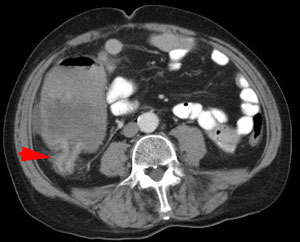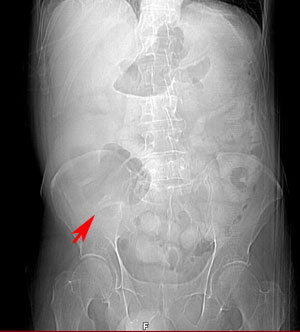GI Radiology > Colon > Structural Abnormalities > Intestinal Obstruction
Structural Abnormalities
![]()
Intestinal Obstruction |
|
|
Intestinal Obstruction may be caused a number of processes such as adhesions, incarcerated hernias, malignancies, intussusception, volvulus, diverticulitis, parasites, fecal impaction, gallstone ileus, and foreign bodies. It may be complete or partial based on whether the lumen is totally occluded, and simple or strangulated based on whether blood supply to the bowel is impaired. Patients present with crampy abdominal pain, vomiting, and distension. Radiographic hallmarks include dilated loops proximal to the obstruction (>3cm in small bowel, >6 in large bowel), a stepladder or hairpin pattern due to air-fluid levels at different heights within the same loop, and the "string of pearls" sign due to small gas bubbles trapped between folds in dilated, fluid-filled loops. CT is often helpful, providing clues as to the cause of obstruction so that the treatment plan may be directed towards the specific problem. Barium studies and enteroclysis may also be used.
CT showing the site of obstruction due to tumor (arrow) with proximal dilation of the bowel Abdominal X-ray showing dilated loops of bowel proximal to the point of obstruction (arrow) |


